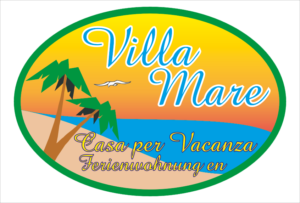WHAT TO VISIT
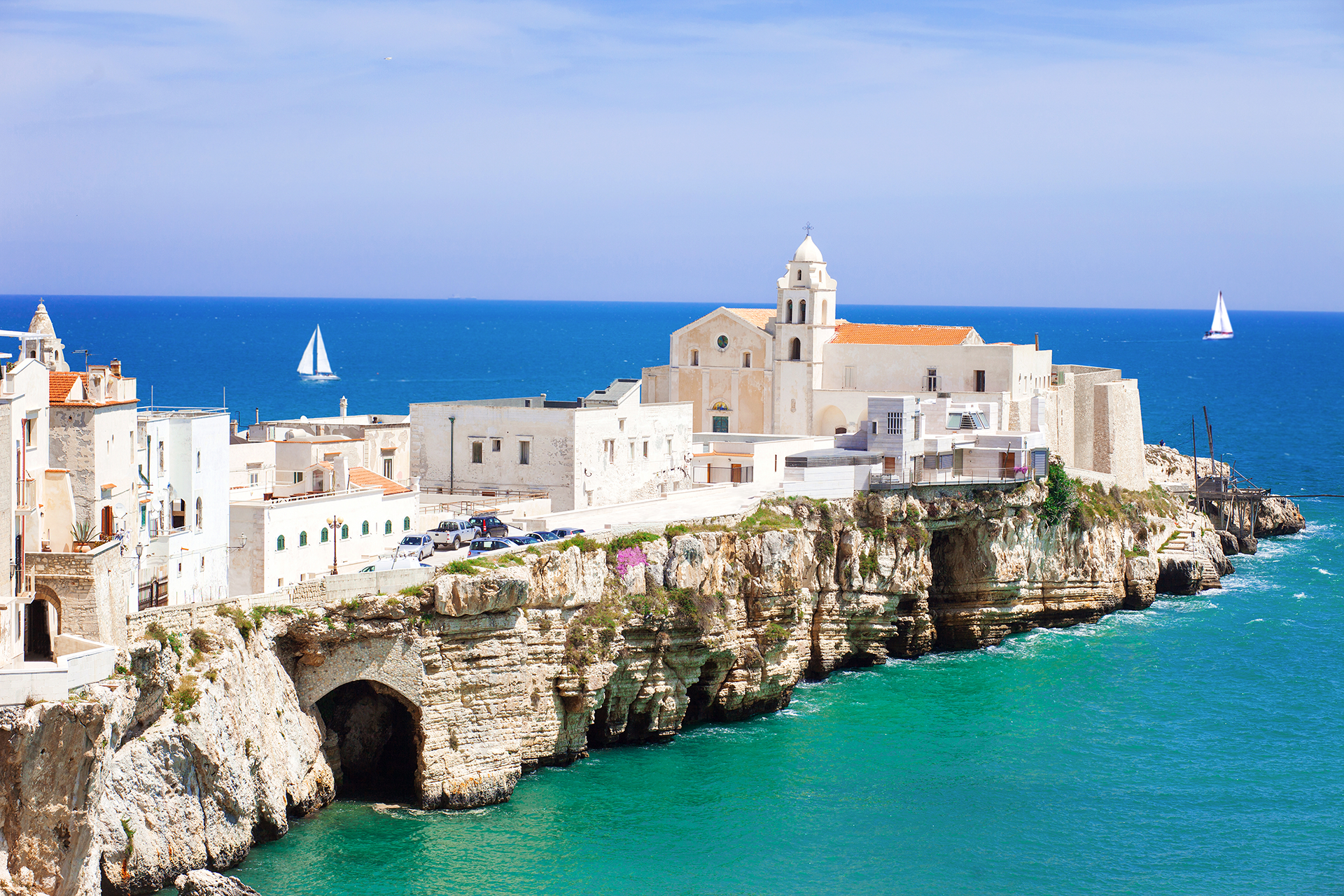
Punta San Francesco
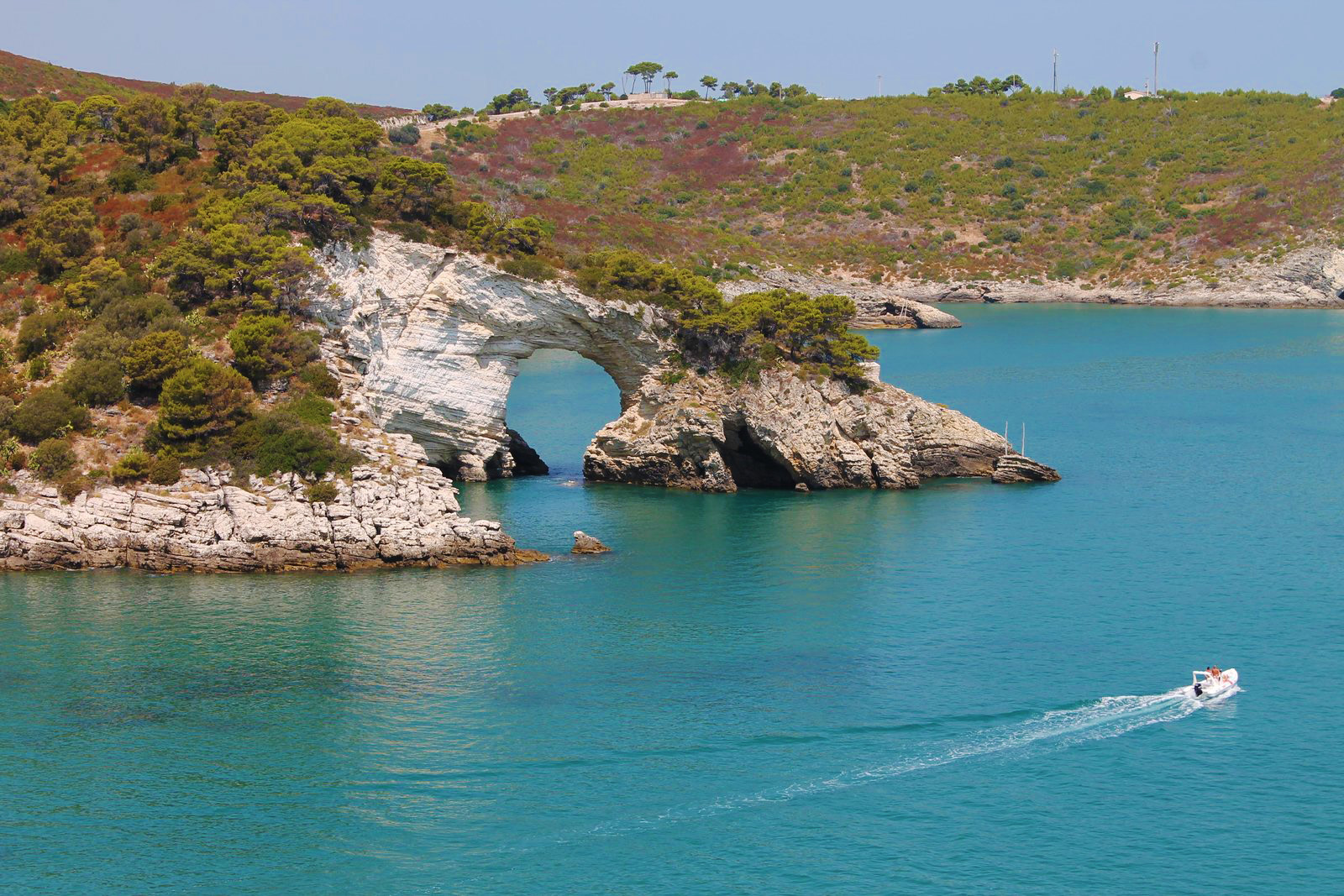
Arco di San Felice
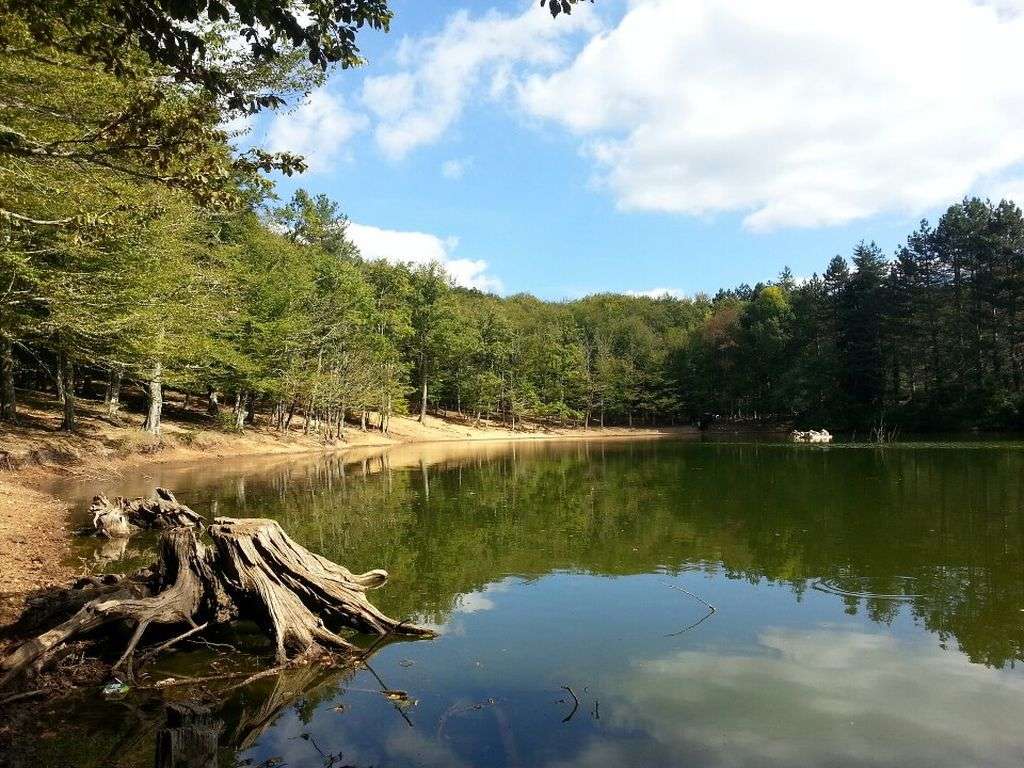
Parco Nazionale del Gargano
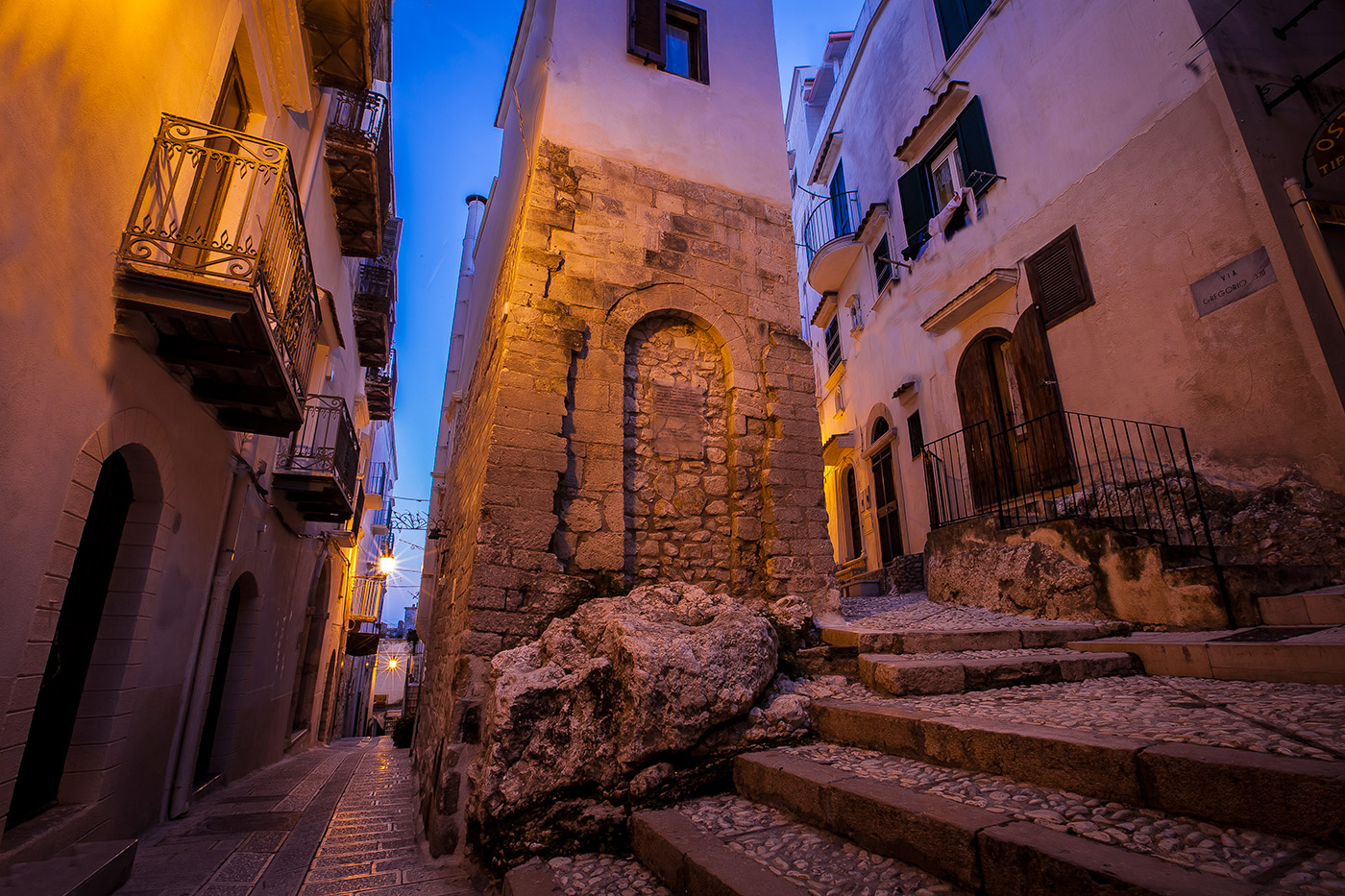
Borgo Antico
THE STORY OF VIESTE
Given its geographical position, which favored fishing and maritime trade, and its climatic conditions, which favored agriculture and pastoralism, it is no wonder that the first human settlements in the Vieste area date back to the Neolithic period. Settlements witnessed by the discovery of the necropolis and many other historical artifacts, including ancient villages of Vieste. But the most difficult point for historians is what concerns the origin of the city. A fabulous story tells that Noah had finished the flood and the ark laid on Mount Ararat decided to spend the rest of his life on the shores of the Gargano. Here he found his death his wife Vesta and Noah founded the city imposing the name of his wife.
To give us a more concrete help is a mention of Ptolemy of the second century. B.C. that identifies this area with the name of Apeneste. Formerly inhabited by the Greeks, the name Apeneste means an isolated refuge. In fact, the Greeks, who spent long, isolated winters here and away from their families and lands, considered this place a temporary refuge. And this nostalgia for the family led the Greeks to become very close to their goddess of the home “Estia”. The cult of the goddess spread widely among the local populations, and later the Romans began to worship it by naming it Veste and calling this area Vesta, hence the name Vieste.
Here he found his death his wife Vesta and Noah founded the city imposing the name of his wife
But in recent years we have come to identify Vieste as the ancient Uria. In fact, historians, who previously placed this city in other Gargano countries, thanks to the discovery of some historical artifacts, including coins, and a large number of inscriptions found in a cave on the islet of Santa Eufemia, which documents the cult for the Venus Sosandra, whose cult in Uria speaks to us in Catullo 36, today they identify the ancient Uria in Vieste. With this big question mark on the origins of Vieste the only certain thing that can be said of its antiquity, is that around her there were other human settlements, such as the city of Merino, devoted to agriculture and pastoralism, and that Vieste it must have been of some importance, given the discovery of one of the largest flint mines in Europe, and given its position on the sea that made it easy to control all along the Adriatic.
Precisely because of its position on the Gargano, Vieste in the Middle Ages was repeatedly disputed between Byzantines, Normans, Lombards, Venetians and Arabs, who exploited this position above all from the military point of view. Until it was under Byzantine rule, Vieste could prosper thanks to the government of Constantinople which guaranteed the safety of the sea routes and traffic. But the rise of the barbarians from the north, and the continual raids by the Arabs from the south, turned this area into a theater of military clashes to ensure the control of Vieste, since those who controlled Vieste could control all the traffic of goods along the Adriatic , both from the north and from the south.
Precisely because of its position on the Gargano, Vieste in the Middle Ages was repeatedly contested
Around the year one thousand Vieste was under the Norman dominion; under their rule were built the castle and the cathedral, which were seriously damaged following an incursion by the Venetians. They were almost immediately rebuilt by Frederick II of Swabia, who was very fond of this city, greatly strengthening the castle’s defenses and making it an impregnable fortress. The story also wants that in 1002 there arrived the doge of Venice who went to the rescue of Bari occupied by the Saracens, and that Pope Alexander III stayed there a month before embarking to go to sign the peace with Federico Barbarossa. Celestino V was also captured, who after having renounced the papacy tried to flee to Illyria.
Other frequent and very unpleasant events were the invasions of the pirates who caused serious damage to the city. Among these the most violent was that of 1554 of the pirate Dragut. He took the strongest citizens prisoner, and over a stone now called Chianca Amara (bitter Stone), he killed over 5,000 Viestans among old men, women and children. After the invasion of Dragut, Vieste was equipped with coastal towers to prevent these unpleasant visits. These were sturdy buildings difficult to access for the pirates, arranged along the coast on the most protruding points, so that one could see each other. In the case of sightings, the soldiers on the towers communicated the presence of suspicious boats with visual signals to the other towers.
Frederick II of Swabia, who had this city very close to his heart
As for the Risorgimento age, Vieste also contributed to the unification of Italy. Contribution stained with the blood of many citizens who on one side firmly believed in the unity of Italy, and on the other remained faithful to the Bourbon kingdom. Secret societies were formed that conspired against the Bourbons, and to increase the enthusiasm of those who were part of it, there were the continuous news that brought students and professionals from Naples. The Bourbons felt increasingly threatened by the fervent growth of those who believed in unity, and began to persecute, kill and condemn the supporters of King Victor Emmanuel to the hard prison. Piedmont, succeeding in obtaining the annexation of Lombardy first, then Tuscany and Emilia Romagna, increased the discontent in the Kingdom of the Two Sicilies against King Francis II.
Discontent that was fiercely repressed by the Bourbon king. Vittorio Emanuele taking advantage of the situation decided to free the Kingdom of the Two Sicilies. An expedition of 1000 men commanded by Garibaldi, he left Quarto on May 5, 1860, and entered Naples on September 7, freeing it from the Bourbons. On October 21st the votes were taken to annex the Kingdom of the Two Sicilies to Italy. It was following these votes that in Vieste and in all the surrounding countries many bloodshed occurred. These areas of Italy were very linked to the Bourbon kingdom, and from here came many clashes with the troops of the Italian kingdom. In only two years, between 1861 and 1863, there were more than 400 prooborbones killed or killed during the clashes. Just in Vieste, July 27, 1861, there was a bloody clash between an expedition of prooborbonici and the citizens committed to realize the unity of Italy, which caused the death of many honest citizens.
TESTIMONIALS
Martino D
![]()
We stayed in this facility two weeks, two adults and one boy. The houses are masonry with a large veranda, very beautiful and clean surrounded by greenery, from palm trees to pine trees and a nice vegetable garden, with nice courtyard animals, where there is the opportunity to buy fruit and vegetables fresh and olive oil of own production (delicious), which we did.
Selevazzano
![]()
Quiet and safe place for a holiday of absolute rest, cozy environment, people available. Complex of houses 50 meters from the sea where you can take advantage of free beach or lidos equipped with typical restaurants. The houses are clean and the surrounding space is well kept. I recommend it to families with children who are looking for maximum relaxation.
Massimo B
![]()
Clean and comfortable apartments, with veranda where to have lunch; in our case it was a three-room apartment with two bedrooms, bathroom with shower, entrance with kitchen. very close to the beach: going out from the gate and crossing the road leads to the beach (free but also equipped if desired); the promenade is full of restaurants and there is a small market within walking distance from the property.
Lungomare Enrico Mattei 118, Vieste
(+39) 0884 700967
(+39) 0884 700967
(+39) 3497200511
villamare@tiscali.it
